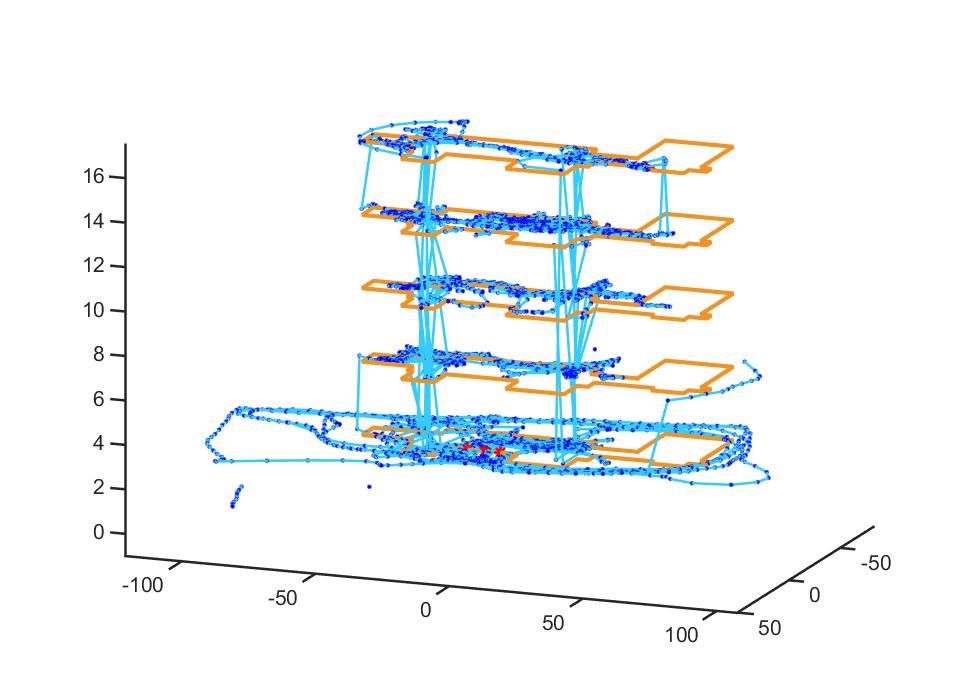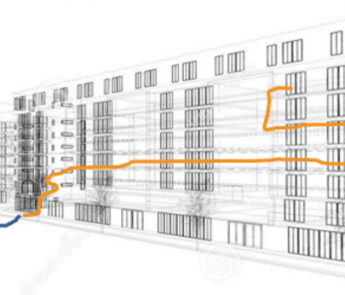
Video: CPS indoor 3D tracks and detected wifis walking around in a 5 floor building. Median error about 10m.
Our CPS Indoor 3D research project started in January and the goal is to develop the first global indoor positioning solution that does not just give latitude and longitude but also floor. To repeat again, our goal is no manual learning and no calibration! All learning should be based on crowd sourced data. This is the only way to make a truly global positioning service. This however sets requirements on our learning clients for crowd sourcing. We cannot allow to run full inertial navigation based on all sensors in the mobiles since that would drain battery quickly for the user.
We have accomplished quite a lot in just 4 months.
- Modified the 2D learning algorithms we had to 2.5D algorithms that now also use and detects floor
- Built an Indoor SLAM app that collects data for 2.5D modelling and verified on a few buildings
- Built a 3D test system based on fine timing measurements (FTM)
- Developed full 3D SLAM algorithms that can use FTM data
We are now continuing the work to improve and implement these algorithms in our production environment. Converting Matlab code to C++, verify it and make practical adjustments and limits to get best possible performance based on current data. So we still have more work to do 🙂
1) 2.5D positioning using RSSI
The results from last research project showed that we need less noisy measurements than what we get from RSS or we need more data on which floor scans actually have been made or some other data that helps. So we now use the pressure sensor for detecting floor when crowd sourcing data. We have developed algorithms that convert pressure sensor data accurately to floor and even estimate the height between floors. We achieve a median error around 15m for any building, more data gives less median error up to a point. We aim to get below 10m, but lower than that will be hard since we are still based on noisy RSSI measurements.
We are in progress of implementing the new learning algorithms in our production servers. When done we can really start to use the CPS demo app to evaluate on a grand scale the performance and see where our new algorithms help and where they do not.
2) 3D positioning using FTM in 802.11mc
In the coming 802.11mc standard for WiFi, there is a new positioning feature called fine timing measuremnt (FTM) using round trip time (RTT) measurements between mobile and AP. Using time instead of received signal strength improves accuracy by more than a magnitude. We have built a test system based on mobiles with a special SW that enables FTM. Using this system we have made some tests when entering a building and modelling all APs and the track simultaneous (SLAM). If the APs are in line of sight, we have an error below 1m! We will continue to do more measurements and check NLOS performance, so stay tuned!
Thank you and have a great summer!
Recent Posts




